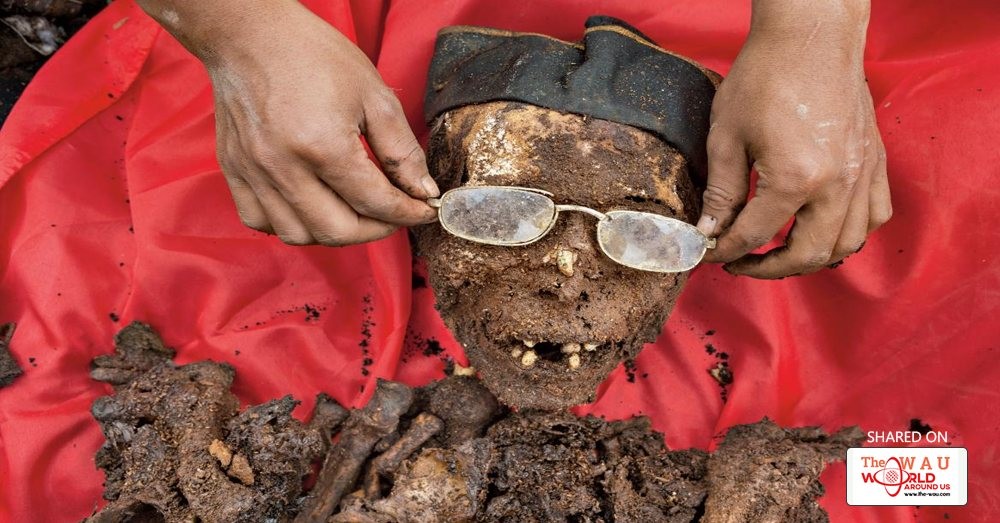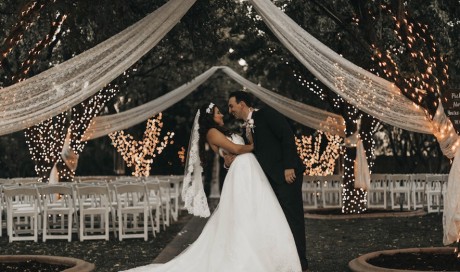One night, a little before seven, Elisabeth Rante pulls a golden curtain back from the doorway. Together we slip inside. She speaks to her husband. “Papa ... Papa,” she whispers. “We have a guest from far away.” Behind us, second eldest son Jamie enters the room with a tray and walks up quietly. “Here is your rice, Papa. Here is your fish. Here are the chilies,” he says.
As we back silently out of the room, Elisabeth says softly, “Wake up, Papa. It’s time for your dinner.” I turn back for a moment as eldest son Yokke explains: “She’s taking your picture, Papa.”

A touching family scene. Nothing that couldn’t happen anywhere on Earth. Except for one thing. Elisabeth’s husband, a former clerk in the city marriage bureau, has been dead for nearly two weeks. Here, in the handsome, melon-colored concrete house of a respected and prosperous family, Petrus Sampe lies motionless on a wooden twin bed, a red patterned blanket tucked under his chin.
For several more days in this house on the fringe of the town of Rantepao, in the remote highlands of the Indonesian island of Sulawesi, Petrus will lie in this bed. His wife and children will speak to him as they bring him food four times a day—breakfast, lunch, dinner, and mid-afternoon tea. “We do this because we love him and respect him so much,” Yokke says. Elisabeth adds, “Before, we used to eat together. He’s still at home—we should feed him.” Formalin (formaldehyde plus water) treatments shortly after death mean the body will not putrefy, but in time it will mummify. The room’s scent is nothing more than the usual hint of sandalwood in a Torajan house. On the wall a picture of Jesus Christ leading a lamb looks down.

Four days later, after musical tributes, a Christian religious service, and a pork, vegetable, and rice dinner for more than a hundred, family members lift Petrus from the bed into a coffin. Videographers record the event. Eight or more children—relatives and friends from the neighborhood—push each other out of the way to get a better view. Afterward Petrus will remain at home, in his coffin, until his funeral in December, four months from now. His wife will live in the house with him until then; some families follow the old custom of never leaving a dead person alone. Until the funeral, Elisabeth and her children will call him to makula’—a sick person. “We believe that even though the father is to makula’, his soul is still in the house,” Yokke says.
For Torajans, the death of the body isn’t the abrupt, final, severing event of the West. Instead, death is just one step in a long, gradually unfolding process. Late loved ones are tended at home for weeks, months, or even years after death. Funerals are often delayed as long as necessary to gather far-flung relatives. The grandest funeral ceremonies are week-long events drawing Torajans home in a vast reverse diaspora from wherever in the world they may be. When a brigade of a hundred or more motorcycles and cars rips through town accompanying a corpse home from far away, traffic stops in a manner that not even an ambulance or a police officer can command. Here, death trumps life.
Torajans do not reject medical treatments for life-threatening conditions. Nor do they escape grief when loved ones die. But far from pushing death away, almost everyone here holds death at the center of life. Torajans believe that people aren’t really dead when they die and that a profound human connection lasts well past death. Death for many Torajans is not a brick wall but a gauze veil. It is not a severing but just another kind of connection. Often in Toraja the deep link with a loved one doesn’t end at the grave. Periodically some northern Torajans bring their relatives out of their tombs to give them fresh clothing and burial shrouds.
No one knows exactly when Torajan death practices began. The Torajan language was written down only in the early 20th century, so most of the old traditions are still oral. Only recently, through carbon dating of wooden coffin fragments, have archaeologists concluded that there are Torajan death practices that date back at least as far as the ninth century A.D. The first Dutch ships arrived in what is now Indonesia in the late 16th century, searching for nutmeg and cloves. Just over 300 years later they reached Toraja, a cultural region that today encompasses the districts of Toraja Utara and Tana Toraja. Thanks to Dutch missionaries, it’s a Christian enclave, made up mostly of Protestants but also Roman Catholics, in a majority-Muslim country. Christianity has tried more or less successfully to partner with traditional practices: Nearly every step of a Torajan death is greeted with prayers, readings from Matthew or John, and a recitation of the Lord’s Prayer.
...[ Continue to next page ]
Share This Post















